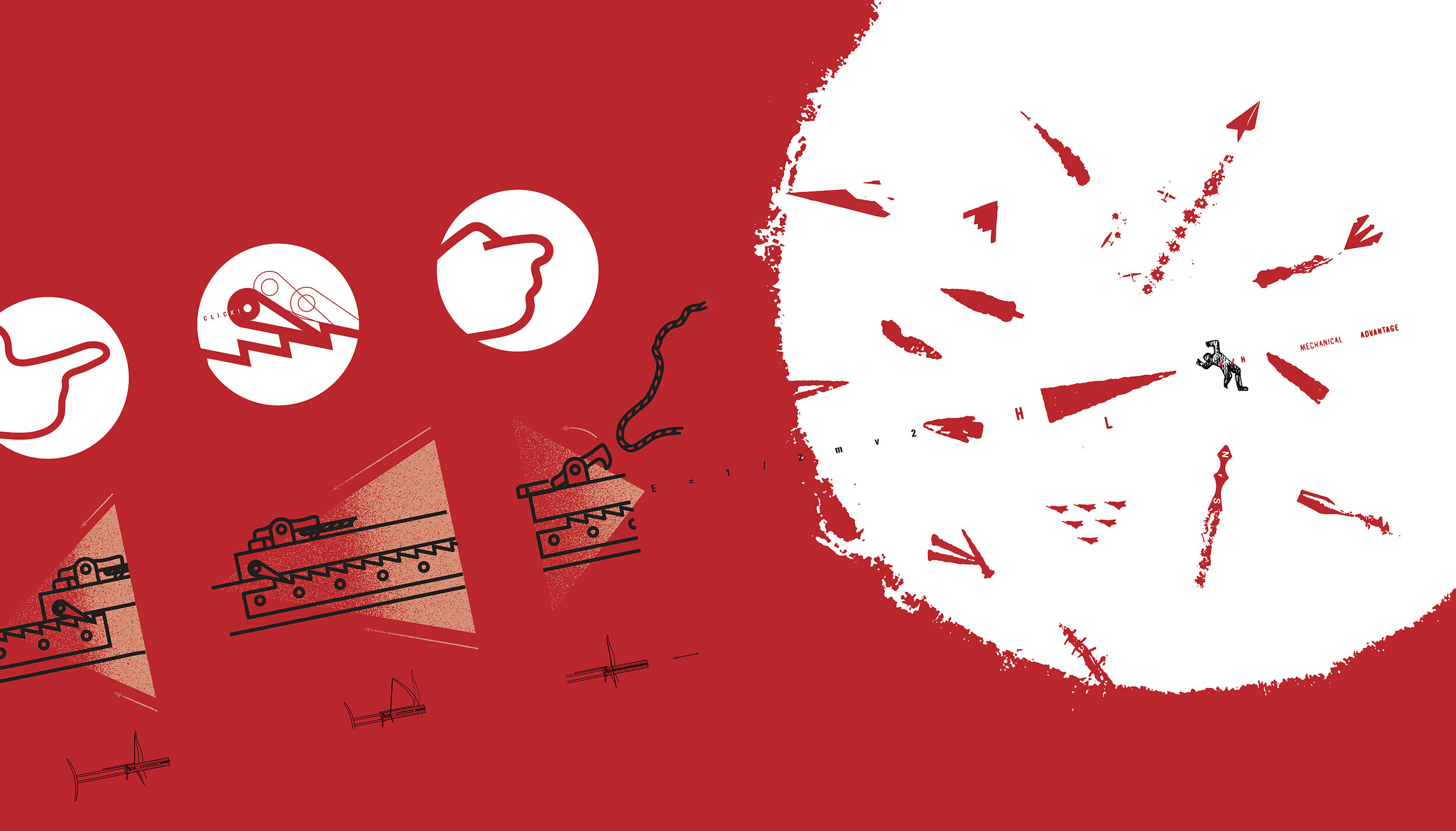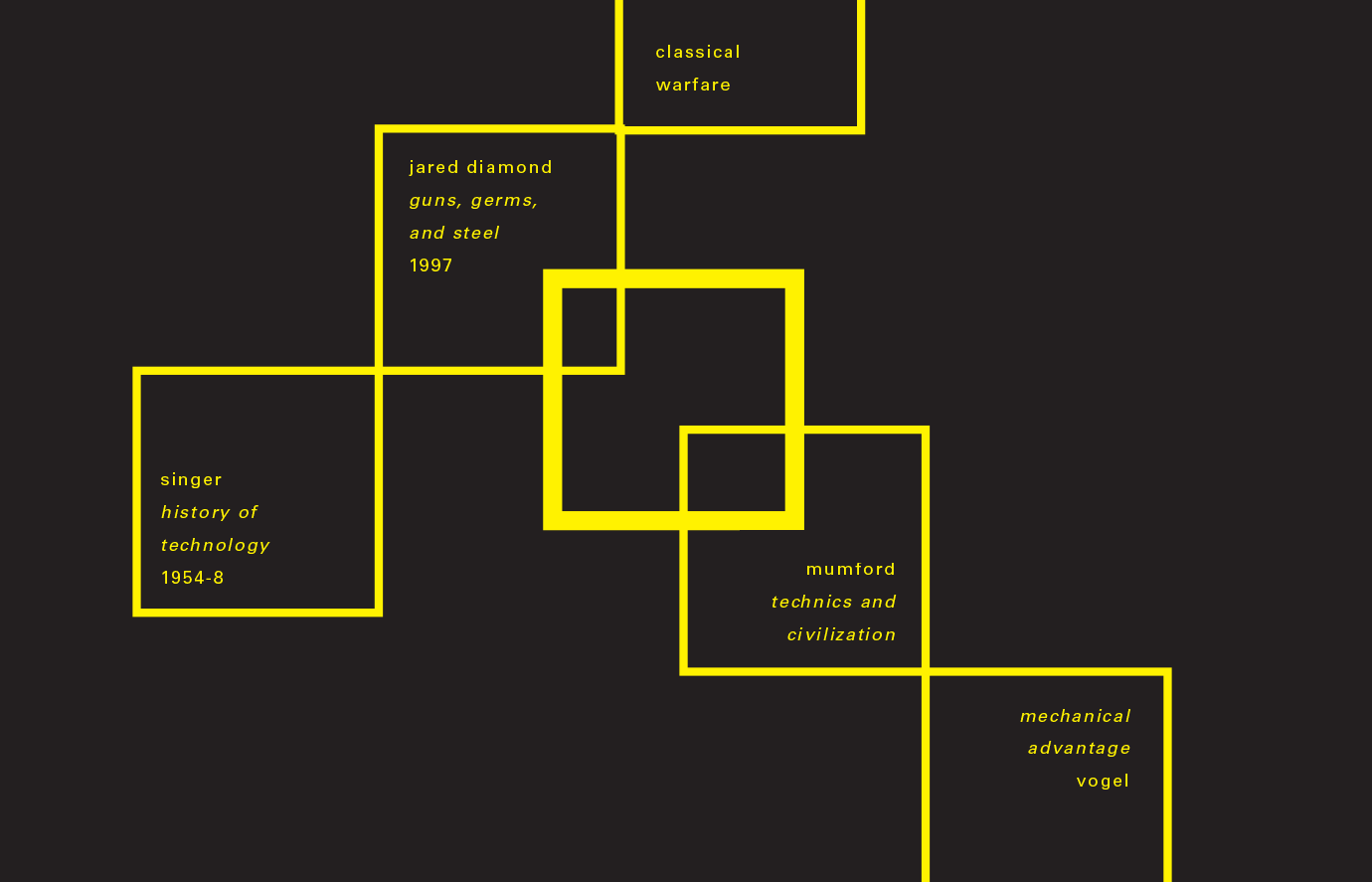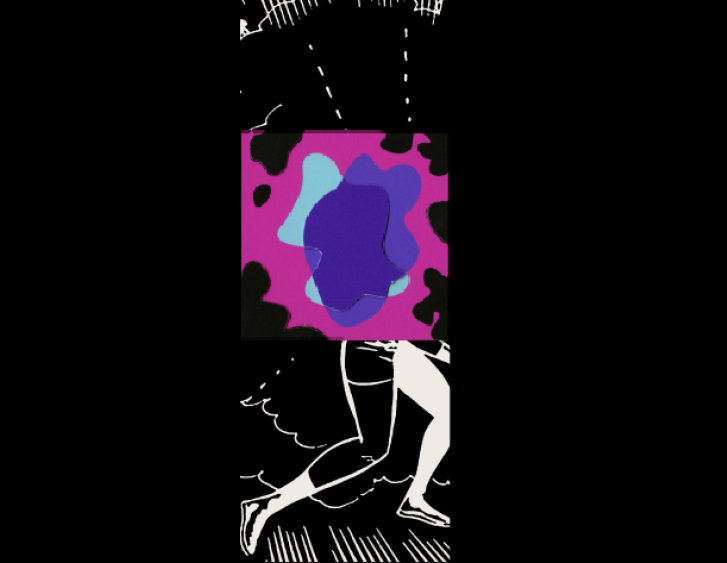Blade, the simplest intervention tool, penetrates nature using the mechanical advantage of its sloped edge, whether on a plow, a sword, or a chisel. Such advantages make history.
Advantage is an artist’s book hybridizing the language of infographics and comics. In the run of 84 pages, I have devised a fable of technology and the inclined plane, envisioning how techniques shaped human geography. The book was produced in a board book edition of 6 copies (2016), as well as a short-run signature bound edition of 100 copies (2017). It is featured in the special collections of the Getty Institute, MET, MoMA, Ryerson Library, Newberry Library, and more.
The story is a culmination of my studies on design and technology history, as well as many years of teaching a graphic design course rethinking comic book storytelling. There are forty spreads, each serving as a historical stage, whose elements are largely modeled after visual representations of technology and warfare found in ancient and medieval artwork, and drawn from archaeological studies. Advantage envisions geographical advantage; the emergence of mechanical advantage; and inquires on how cultures tend to channel their knowledge in a purely visual narrative in the tradition of Gerd Arntz, Lynd Ward, and Frans Masereel.
The book's print edition was exhibited at the Thought Bubble festival in Leeds (2017), UK's largest comic art event; as well as the 2018 Fumetto Comic Festival Luzern, Switzerland.
Advantage introduces parallel stories of three hypothetical civilizations across time and space, showing the cultivation of each in isolation. The story probes the ways in which humans value and harness natural resources and underscores decisive encounters among civilizations. The book’s pages serve as a stage for human geography. Humans distributed horizontally on a climactic belt are well-connected, enjoying a broader knowledge capital. Meanwhile, people distributed vertically face climactic barriers and isolation, lacking the benefits of a common knowledge capital. when the two meet, civilizational drama unfolds. Finally, the mysterious third civilization enters into the picture bringing the story to its conclusion.
The book also ruminates on the purely analytical use of advantages; showing parallels between life, survival, and conquest at geographical, human, and micro-biological scales, and the consequences of encounter leading to eventual displacement of the less advantageous. The book stresses exploration and surveillance to be the most advantageous human endeavor.



























































































































































